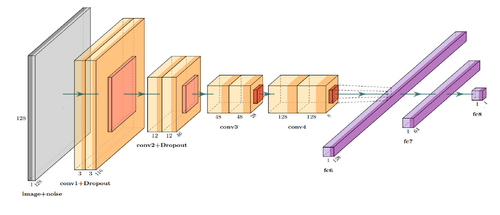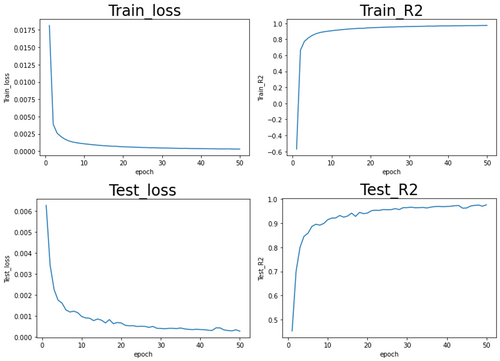“Deep learning on galaxy morphology profile”的版本间差异
跳到导航
跳到搜索
无编辑摘要 |
无编辑摘要 |
||
| (未显示同一用户的40个中间版本) | |||
| 第1行: | 第1行: | ||
本项目主要根据星系形态将星系图片拟合至其形态参数。 |
|||
==Introduction== |
|||
第一步工作旨在复现文章《Deep learning for galaxy surface brightness profile fitting》中用星系信息对星系的参数进行拟合任务,星系形态参数包含星系的星等、星系的轮廓Sersic指数、星系的半光半径和星系的轴比。 |
|||
*This project focuses on fitting galaxy pictures to their morphological parameters based on galaxy morphology. |
|||
引文提出了一种基于二维卷积神经网络的二维光度星系轮廓建模新方法:DeepLeGATo,以实现对星系形态的自动化和快速分析。 |
|||
首先用GalSim,根据随机参数生成相关星系的信息文件。因为深度学习需要大量的图像和参数样本,而图像手工标注的成本太高;且对进行注释人员专业知识要求较高。用参数生成数据集为较方便的实验方法。 |
|||
==Relate Work== |
|||
| ⚫ | |||
*The first work aims to reproduce the task of fitting the parameters of galaxies with galaxy information in the article "Deep learning for galaxy surface brightness profile fitting". The galaxy morphology parameters contain the magnitude of galaxies, the profile Sersic index of galaxies, the half-light radius of galaxies, and the axis ratio of galaxies. |
|||
*The cited paper presents a new method for modeling 2D photometric galaxy profiles based on 2D convolutional neural networks: DeepLeGATo for automated and fast analysis of galaxy morphology. |
|||
==Generate Method== |
|||
===First Method=== |
|||
| ⚫ | |||
*The neural network structure used in the experiments to construct a neural network structure similar to the original text is shown in the following figure. |
|||
*Firstly, GalSim is used to generate information files of relevant galaxies based on random parameters. Because deep learning requires a large number of images and parameter samples, the cost of manual annotation of images is too high; and the expertise of the person conducting the annotation is required. Generating datasets with parameters is a more convenient experimental method. |
|||
*When generating galaxy data with GalSim software, the dimension size of the generated data is also set to random because the dimension size of the real galaxy data varies. The python library is used to generate 50,000 galaxy information, which is partitioned into a training set, a test set, and a validation set in the ratio of 8:1:1. In order to handle galaxy images of different sizes, this paper uses two-dimensional data with a standard size of 128*128 size, which will be different in shape from 128*128 size, cut the center of galaxy images larger than 128*128 pixels, and fill the edges of images smaller than 128*128 pixels. |
|||
===Second NN=== |
|||
*The second task fits the data to multiple parameters. |
|||
[[File:Nn_111.png|500px|right|jumengting]] |
|||
==Result== |
|||
===Generate data First Method=== |
|||
*The above network fits the galaxy data to one parameter using a 2D convolutional neural network. The following are the training results for training a single parameter - star magnitude. |
|||
[[File:result_111.png|500px|right|jumengting]] |
|||
===Generate data Second Method=== |
|||
*Galsim result. |
|||
===Ground-Truth data Second Method=== |
|||
*CANDELS |
|||
==Else== |
|||
Waiting... |
|||
2022年10月1日 (六) 08:15的最新版本
Introduction
- This project focuses on fitting galaxy pictures to their morphological parameters based on galaxy morphology.
Relate Work
- The first work aims to reproduce the task of fitting the parameters of galaxies with galaxy information in the article "Deep learning for galaxy surface brightness profile fitting". The galaxy morphology parameters contain the magnitude of galaxies, the profile Sersic index of galaxies, the half-light radius of galaxies, and the axis ratio of galaxies.
- The cited paper presents a new method for modeling 2D photometric galaxy profiles based on 2D convolutional neural networks: DeepLeGATo for automated and fast analysis of galaxy morphology.
Generate Method
First Method
- The neural network structure used in the experiments to construct a neural network structure similar to the original text is shown in the following figure.
- Firstly, GalSim is used to generate information files of relevant galaxies based on random parameters. Because deep learning requires a large number of images and parameter samples, the cost of manual annotation of images is too high; and the expertise of the person conducting the annotation is required. Generating datasets with parameters is a more convenient experimental method.
- When generating galaxy data with GalSim software, the dimension size of the generated data is also set to random because the dimension size of the real galaxy data varies. The python library is used to generate 50,000 galaxy information, which is partitioned into a training set, a test set, and a validation set in the ratio of 8:1:1. In order to handle galaxy images of different sizes, this paper uses two-dimensional data with a standard size of 128*128 size, which will be different in shape from 128*128 size, cut the center of galaxy images larger than 128*128 pixels, and fill the edges of images smaller than 128*128 pixels.
Second NN
- The second task fits the data to multiple parameters.
Result
Generate data First Method
- The above network fits the galaxy data to one parameter using a 2D convolutional neural network. The following are the training results for training a single parameter - star magnitude.
Generate data Second Method
- Galsim result.
Ground-Truth data Second Method
- CANDELS
Else
Waiting...


